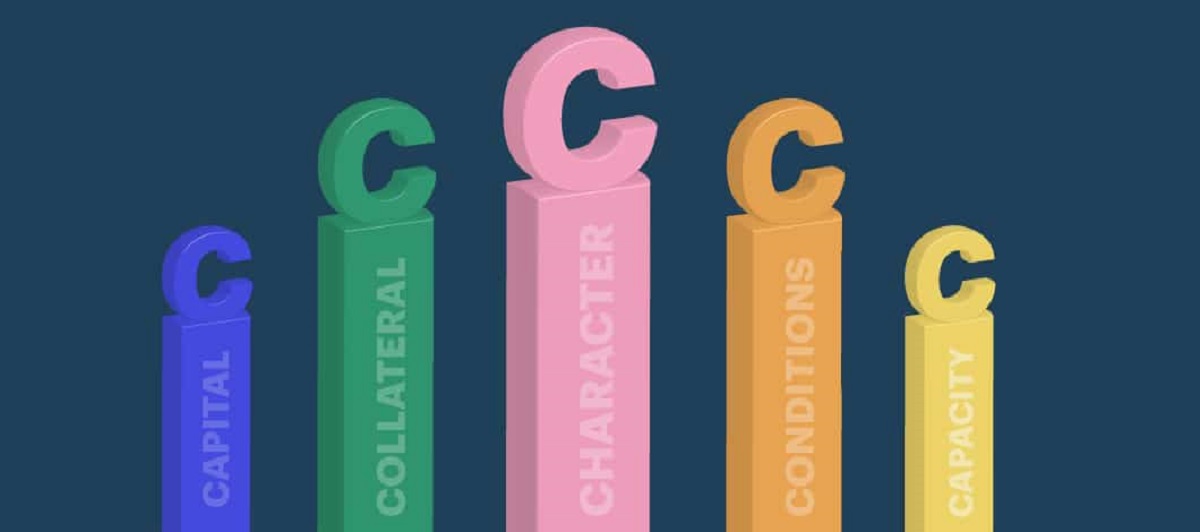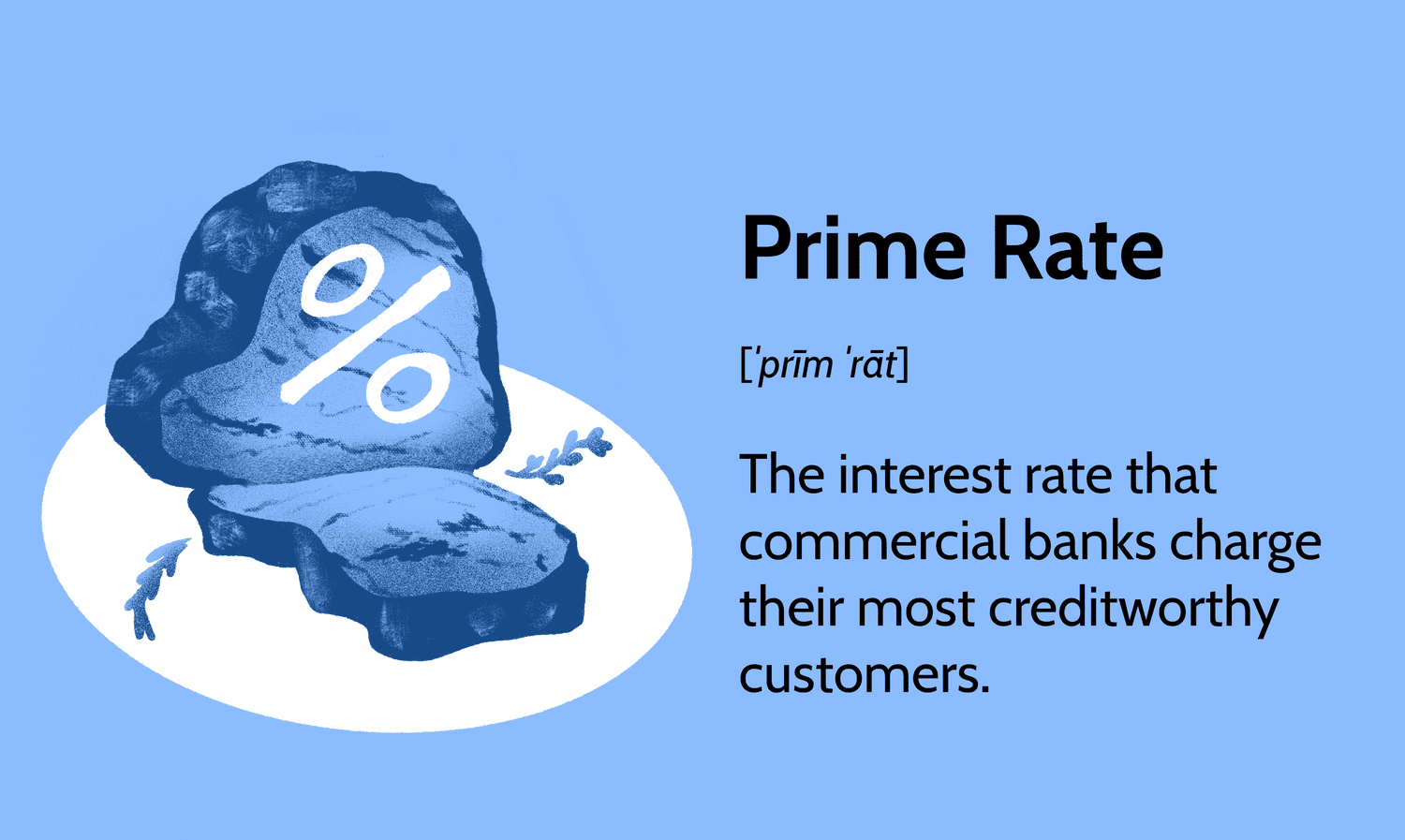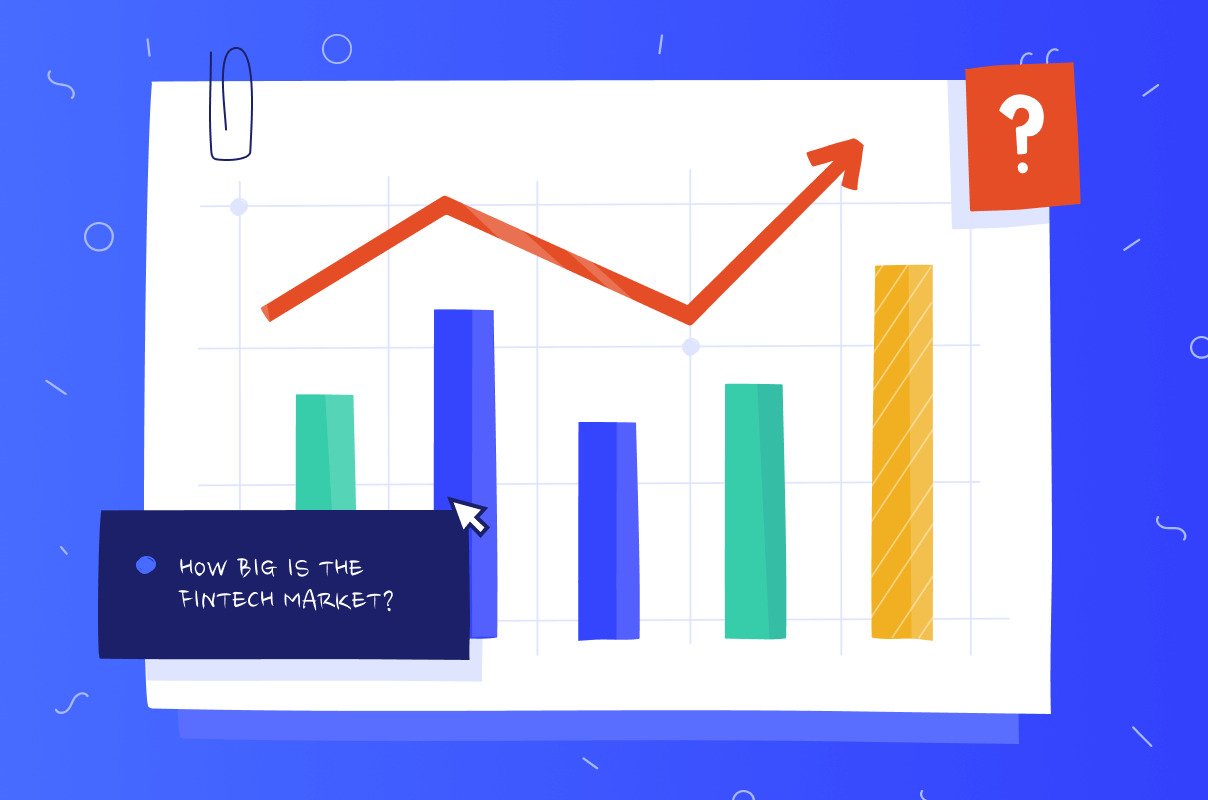Introduction
Welcome to our in-depth guide on C&I lending! If you’ve been exploring the world of finance and loans, you may have come across the acronym “C&I.” But what exactly does it stand for, and what is C&I lending all about?
C&I stands for “Commercial and Industrial,” and C&I lending refers to the process of providing loans and financial services to businesses for their commercial and industrial needs. It is a key aspect of commercial banking and plays a crucial role in supporting the growth and development of businesses in various industries.
Commercial and industrial lending encompasses a wide range of loans specifically designed to finance business operations, expansion, working capital, equipment purchases, acquisitions, and more. These loans are tailored to meet the unique financial needs of businesses and are a vital source of capital and liquidity.
In this comprehensive guide, we will delve deeper into the world of C&I lending, exploring its importance, benefits, risks, how it works, and much more. Whether you are a business owner, an aspiring entrepreneur, or simply interested in understanding the dynamics of lending, this guide will provide you with valuable insights into the world of C&I lending.
Throughout this guide, we will discuss the different types of C&I loans, the qualifications and requirements to obtain these loans, and the best practices for successfully navigating the C&I lending process. By the end, you’ll have a solid understanding of C&I lending and be better equipped to make informed financial decisions for your business.
So, let’s dive in and explore the fascinating world of C&I lending!
What is C&I Lending?
C&I lending, or Commercial and Industrial lending, refers to the provision of loans and financial services to businesses for their commercial and industrial needs. It is a vital component of commercial banking and plays a crucial role in supporting the growth and success of businesses across various industries.
Unlike consumer lending, which focuses on providing loans to individuals for personal use, C&I lending is specifically targeted towards businesses of all sizes, from small local enterprises to large corporations. The loans can be utilized for a variety of purposes, including expanding operations, purchasing equipment, acquiring other businesses, financing working capital, and funding research and development.
One of the key characteristics of C&I lending is its flexibility. The loans are often customized to meet the unique needs of each business, taking into account factors such as industry sector, business size, and creditworthiness. The interest rates, repayment terms, and collateral requirements may vary depending on the specific circumstances of the borrower and the lender’s assessment of risk.
C&I lending provides businesses with access to the capital they need to grow, innovate, and thrive. It allows companies to seize opportunities, invest in new technologies, hire employees, and expand their market presence. Without C&I lending, many businesses would struggle to secure the necessary funds to operate and achieve their growth objectives.
Commercial banks are the primary providers of C&I loans. These banks carefully evaluate the creditworthiness of each borrower to mitigate the risk of loan default. They assess factors such as the borrower’s financial statements, cash flow, business plan, management team, and collateral. The due diligence process ensures that the bank can make an informed decision about lending to the business.
Overall, C&I lending is a vital component of the economy, as it stimulates business growth and provides the financial resources necessary for companies to thrive and contribute to economic development. By helping businesses access capital, C&I lending plays an essential role in job creation, innovation, and overall prosperity.
Importance of C&I Lending
C&I lending plays a critical role in the financial ecosystem by fueling the growth and expansion of businesses. It provides businesses with the necessary capital to invest in infrastructure, equipment, workforce, research and development, and other essential aspects of their operations. The importance of C&I lending can be seen in the following ways:
Facilitating Business Growth: C&I lending allows businesses to access the funds they need to expand their operations, whether it’s opening new locations, increasing production capacity, or investing in new technologies. By providing capital for growth initiatives, C&I loans help businesses seize opportunities and remain competitive in their respective industries.
Promoting Job Creation: As businesses expand and invest in their operations, they often need to hire new employees. C&I lending enables businesses to finance their workforce expansion, leading to job creation and boosting employment opportunities. This, in turn, contributes to economic growth and stability.
Encouraging Innovation: Innovation is crucial for businesses to stay ahead in today’s rapidly evolving marketplace. C&I lending allows businesses to invest in research and development (R&D) activities, develop new products and services, and enhance their competitive advantage. By providing funding for innovation, C&I lending fosters economic progress and drives technological advancements.
Supporting Small and Medium Enterprises (SMEs): SMEs are the backbone of many economies, and they often face challenges in accessing affordable financing. C&I lending plays a vital role in supporting SMEs by providing them with the necessary capital to grow their businesses, create jobs, and contribute to economic development.
Enabling Business Transformation: In today’s dynamic business landscape, companies need to adapt and transform to stay relevant. C&I lending helps businesses finance strategic initiatives, such as acquisitions, mergers, and restructuring, allowing them to adapt to changing market conditions and seize new opportunities.
Contributing to Economic Stability: The availability of credit and capital is essential for maintaining a stable economy. C&I lending ensures that businesses have access to the necessary funds to meet their financial obligations and continue their operations. By providing stability to businesses, C&I lending indirectly contributes to overall economic stability.
In summary, C&I lending is of paramount importance as it supports business growth, job creation, innovation, and economic stability. By providing businesses with the necessary financial resources, C&I lending strengthens the overall economy and drives sustainable development.
Benefits and Risks of C&I Lending
C&I lending offers several benefits for both borrowers and lenders, but like any financial activity, it also comes with risks. It is important for businesses and lenders to understand and assess these benefits and risks before engaging in C&I lending. Let’s explore them further:
Benefits of C&I Lending:
- Access to Capital: C&I loans provide businesses with the necessary capital to finance their operations, investments, and growth initiatives. This access to funding is crucial for businesses to seize opportunities and remain competitive in their industries.
- Flexibility: C&I loans are highly customizable, allowing borrowers to tailor the loan terms to their specific needs. This flexibility ensures that businesses can obtain the financing that aligns with their unique circumstances and objectives.
- Lower Interest Rates: Compared to other forms of borrowing, such as credit cards or lines of credit, C&I loans generally offer lower interest rates. This can result in significant savings for businesses over the duration of the loan.
- Improved Cash Flow: C&I loans can be structured to align with a business’s cash flow, providing them with a steady stream of capital to meet their financial obligations and maintain a healthy cash flow position.
- Relationship Building: C&I lending often involves a long-term relationship between borrowers and lenders. Through this relationship, businesses have the opportunity to build trust and rapport with their lenders, which can be beneficial for future financing needs.
Risks of C&I Lending:
- Credit Risk: One of the primary risks in C&I lending is the possibility of borrower defaulting on loan payments. Lenders assess the creditworthiness of borrowers to mitigate this risk, but it is still essential to carefully evaluate the financial health and history of potential borrowers.
- Market Risk: Economic conditions can impact the ability of businesses to meet their loan obligations. A downturn or industry-specific challenges may affect a borrower’s ability to generate revenue, making it harder to repay the loan.
- Interest Rate Risk: Interest rates can fluctuate over the life of a loan, which can impact the cost of borrowing for businesses. For variable rate loans, businesses must be prepared for potential interest rate increases that may impact their loan repayments.
- Liquidity Risk: C&I lending typically involves larger loan amounts, which can tie up a significant portion of a lender’s available funds. If there is a need to access liquidity quickly, a lender’s ability to do so may be constrained.
- Regulatory and Compliance Risk: Lenders must navigate a complex regulatory landscape when engaging in C&I lending. Compliance with relevant laws and regulations is crucial to avoid legal and reputational issues.
It is important for both borrowers and lenders to carefully assess the benefits and risks of C&I lending before entering into any loan agreement. Proper due diligence, risk management, and ongoing monitoring are essential to mitigate risks and ensure a successful lending relationship.
How C&I Lending Works
C&I lending involves a systematic process that allows businesses to obtain the financing they need, while lenders assess and manage the associated risks. Let’s explore how C&I lending works:
1. Loan Application: The process begins with a business submitting a loan application to a lender. The application typically includes detailed information about the business’s financial statements, cash flow projections, business plan, purpose of the loan, and any collateral offered.
2. Lender Evaluation: The lender carefully evaluates the loan application and assesses the creditworthiness of the borrower. This evaluation involves reviewing the business’s financial history, credit score, industry outlook, management team, and collateral offered, if applicable. The lenders use this information to determine the level of risk associated with the loan.
3. Loan Approval: If the lender is satisfied with the borrower’s creditworthiness and the proposed loan meets its risk criteria, the loan is approved. The lender will provide the borrower with a loan offer, specifying the loan amount, interest rate, repayment terms, fees, and any other relevant conditions.
4. Loan Agreement: Once the borrower accepts the loan offer, they enter into a formal loan agreement with the lender. This agreement outlines the terms and conditions of the loan, including payment schedule, interest calculation method, events of default, and remedies for both parties. It is essential for both parties to thoroughly review and understand the terms of the loan agreement before signing.
5. Loan Disbursement: Upon signing the loan agreement, the lender disburses the loan funds to the borrower. The funds can be provided in a lump sum or in installments, depending on the nature of the loan and the borrower’s requirements.
6. Loan Repayment: The borrower is responsible for repaying the loan in accordance with the terms specified in the loan agreement. This includes making regular payments, typically on a monthly basis, that include both principal and interest. Failure to comply with the repayment terms may result in penalties, additional interest, or even default.
7. Ongoing Monitoring: Throughout the life of the loan, the lender conducts ongoing monitoring of the borrower’s financial performance, ensuring that they continue to meet their loan obligations. The lender may require periodic financial statements, reports, or updates from the borrower to assess their financial health and address any concerns that may arise.
8. Loan Termination: Once the borrower has repaid the loan in full, the loan is considered terminated. The lender provides a written confirmation of the loan’s closure, releasing any liens or claims on the borrower’s assets that may have been used as collateral.
It is important to note that the exact process and requirements may vary depending on the lender, the borrower’s industry, and the specific terms of the loan. Both borrowers and lenders must communicate openly, providing the necessary information and documentation to ensure a smooth and mutually beneficial lending experience.
C&I Lending vs. Commercial Real Estate Lending
When it comes to lending for business-related purposes, two common types of loans are C&I (Commercial and Industrial) lending and commercial real estate lending. While both serve the needs of businesses, there are distinct differences between the two. Let’s explore the differences between C&I lending and commercial real estate lending:
C&I Lending:
C&I lending focuses on providing loans to businesses for their commercial and industrial needs, such as working capital, equipment purchasing, inventory financing, and general operations. The loans are typically short or intermediate-term and can be tailored based on the unique financial requirements of each business. C&I loans are often unsecured or require limited collateral, as they primarily rely on the borrower’s cash flow and creditworthiness. The interest rates for C&I loans may be higher compared to mortgage loans, reflecting the higher level of risk involved. C&I lending is essential for businesses across various industries, supporting growth, expansion, and day-to-day operations.
Commercial Real Estate Lending:
Commercial real estate lending, as the name suggests, focuses on providing loans for the purchase, development, or refinance of commercial real estate properties, including office buildings, retail centers, industrial facilities, and multi-family residential properties. These loans are typically long-term in nature, often with fixed interest rates and amortized payments over a specified period. Commercial real estate loans are secured by the property itself, and the property’s value and income potential play a significant role in the loan assessment. The loan terms may include lease requirements, property appraisals, and specific conditions related to the property’s use and occupancy.
Differences between C&I Lending and Commercial Real Estate Lending:
- Purpose: C&I lending focuses on financing general business needs, while commercial real estate lending specifically targets real estate acquisition and development.
- Loan Terms: C&I loans are typically shorter-term and more flexible, while commercial real estate loans are generally longer-term and have more structured repayment terms.
- Collateral: C&I loans may require limited collateral, primarily depending on the borrower’s creditworthiness, whereas commercial real estate loans are secured by the property being financed.
- Interest Rates: C&I loans often have higher interest rates due to the higher level of risk involved, while commercial real estate loans tend to have lower interest rates.
- Risk Assessment: C&I lending focuses on evaluating the borrower’s overall financial health and cash flow, while commercial real estate lending places significant emphasis on the value and income potential of the property being financed.
- Loan Size: Commercial real estate loans tend to be larger in size compared to C&I loans, reflecting the significant investment required for real estate properties.
Both C&I lending and commercial real estate lending serve specific purposes and play essential roles in supporting businesses and economic growth. Understanding the differences between these types of lending can help businesses select the most appropriate financing options based on their specific needs and circumstances.
Types of C&I Loans
C&I lending offers various types of loans specifically designed to meet the diverse financial needs of businesses. These loans cater to different requirements, industries, and stages of a business’s life cycle. Let’s explore some common types of C&I loans:
Working Capital Loans: Working capital loans provide businesses with the funds needed to cover day-to-day operational expenses, manage cash flow fluctuations, and support ongoing business activities. These loans ensure that businesses have enough liquidity to cover their short-term obligations, such as inventory purchases, payroll, rent, and utility bills.
Equipment Financing: Equipment financing loans enable businesses to purchase or lease equipment and machinery necessary for their operations. These loans can be used to acquire various types of equipment, such as manufacturing machinery, vehicles, technology infrastructure, medical equipment, and more. The equipment being financed often serves as collateral for the loan.
Term Loans: Term loans provide businesses with a lump sum of capital that is repaid over a specified term, typically ranging from one to ten years. These loans are suitable for businesses requiring funds for expansion, acquisitions, refinancing, or other long-term investments. Term loans often have fixed interest rates and monthly installment repayments.
Lines of Credit: A line of credit is a flexible borrowing option that provides businesses with access to a predetermined credit limit. Businesses can withdraw funds as needed, up to the approved limit, and only pay interest on the amount borrowed. Lines of credit are often used for managing cash flow fluctuations, short-term financing needs, and unforeseen expenses.
Invoice Financing: Invoice financing, also known as accounts receivable financing, allows businesses to borrow against their outstanding customer invoices. The lender advances a portion of the unpaid invoices’ value, helping businesses bridge the gap between invoice issuance and customer payments. Once the customer pays the invoice, the remaining balance is given to the business, minus the financing fees.
Trade Finance: Trade finance helps facilitate international trade by providing financing solutions to businesses involved in importing and exporting goods. Trade finance options include letters of credit, which guarantee payment to suppliers, and export/import financing, which provides funds to cover the production, shipping, and delivery of goods.
Small Business Administration (SBA) Loans: SBA loans are government-guaranteed loans designed to support small businesses. These loans offer favorable terms, longer repayment periods, and lower down payments than traditional loans. SBA loans are available for various purposes, including working capital, equipment purchase, real estate acquisition, and business expansion.
These are just a few examples of the types of C&I loans available to businesses. Understanding the specific needs and goals of your business will help you identify the most appropriate type of loan for your financing requirements.
Qualifications and Requirements for C&I Lending
Obtaining a C&I loan requires meeting specific qualifications and fulfilling certain requirements. Lenders assess various factors to determine the borrower’s creditworthiness and ability to repay the loan. The qualifications and requirements for C&I lending typically include the following:
1. Business Creditworthiness: Lenders evaluate the creditworthiness of the business by reviewing its credit history, payment patterns, and any previous loan obligations. A strong credit history and a demonstrated ability to manage debt responsibly increase the chances of loan approval.
2. Financial Stability: Lenders assess the financial stability of the business by examining its financial statements, including the balance sheet, income statement, and cash flow statement. Financial stability demonstrates the business’s ability to generate consistent revenue and manage expenses effectively.
3. Business Plan: A well-prepared business plan communicates the strategic vision, goals, and growth projections of the business. Lenders consider the viability of the business plan and how it aligns with the requested loan’s purpose.
4. Management Experience and Expertise: Lenders evaluate the management team’s experience and expertise to assess the business’s leadership capabilities. Demonstrating a track record of successful business management adds credibility to the loan application.
5. Cash Flow and Debt-to-Income Ratio: Lenders analyze the business’s cash flow to determine its ability to repay the loan. Positive and sufficient cash flow, along with a healthy debt-to-income ratio, show the business’s capacity to cover loan repayments without straining its finances.
6. Collateral: In some cases, lenders may require collateral to secure the loan. Collateral can be in the form of real estate, equipment, inventory, or other valuable assets that the lender can seize in the event of default. The value and quality of the collateral affect the loan amount and interest rate.
7. Documentation: Borrowers must provide the necessary documentation to support their loan application, such as financial statements, tax returns, bank statements, business licenses, and legal documents. Accurate and up-to-date documentation facilitates the loan evaluation process.
8. Industry and Market Outlook: Lenders consider the industry and market conditions in which the business operates. Industries with favorable growth prospects and stable markets are more likely to receive loan approval.
It’s important to note that each lender may have specific criteria and requirements, so it’s advisable to consult with the lender directly for their specific guidelines. Meeting these qualifications and requirements increases the likelihood of loan approval and helps borrowers secure favorable loan terms.
How to Apply for C&I Loans
Applying for a C&I loan involves a systematic process that requires careful preparation and attention to detail. To ensure a smooth and successful loan application, consider the following steps:
1. Define Your Loan Needs: Clearly identify your business’s financing needs and determine the specific purpose of the loan. Whether it’s working capital, equipment financing, or expansion, understanding your requirements will help you choose the right type of C&I loan.
2. Research and Select Lenders: Conduct thorough research to identify reputable lenders that specialize in C&I lending. Consider factors such as interest rates, loan terms, fees, and the lender’s reputation and experience in lending to businesses similar to yours.
3. Prepare Required Documentation: Gather all the necessary documentation to support your loan application. This may include financial statements, tax returns, bank statements, business licenses, and any other documents specific to your industry or purpose of the loan. Ensure that the documentation is accurate, up-to-date, and organized.
4. Develop a Comprehensive Business Plan: Craft a well-written business plan that clearly communicates your business’s goals, strategies, financial projections, and how the loan will contribute to your success. A strong business plan demonstrates your understanding of your industry and the viability of your business.
5. Complete the Loan Application: Fill out the loan application provided by the lender. Include all the requested information accurately and completely. Be prepared to provide details about your business, its financials, ownership structure, the purpose of the loan, and any collateral you might offer.
6. Provide Additional Information: In some cases, lenders may require additional information or clarification during the loan evaluation process. Be responsive and provide the requested information promptly to avoid delays in the loan approval process.
7. Wait for Loan Approval: After submitting your loan application, the lender will evaluate your application, assess the associated risks, and determine whether to approve the loan. This process may take some time, so be patient and maintain communication with the lender during this period.
8. Review and Sign the Loan Agreement: If your loan application is approved, carefully review the loan agreement provided by the lender. Ensure that you understand the terms, including the interest rate, repayment schedule, and any fees associated with the loan. Seek legal advice if necessary before signing the agreement.
9. Receive Loan Funds and Monitor Loan Obligations: Once you have signed the loan agreement, the lender will disburse the loan funds. Ensure that you use the funds according to the agreed-upon purpose and make timely repayments as outlined in the loan agreement. Regularly monitor your loan obligations and maintain open communication with the lender throughout the loan term.
Remember that each lender may have specific processes and requirements, so it’s essential to familiarize yourself with their specific guidelines. By following these steps and being organized and prepared, you can increase your chances of successfully obtaining a C&I loan for your business.
Best Practices for C&I Lending
Engaging in C&I lending requires careful planning, evaluation, and risk management to ensure a successful lending experience for both borrowers and lenders. Here are some best practices to consider when entering into C&I lending:
1. Conduct Proper Due Diligence: Thoroughly evaluate the creditworthiness and financial stability of potential borrowers. Assess their business’s financial statements, cash flow, industry outlook, management team, and collateral (if applicable). This due diligence process helps mitigate the risk of loan default and ensure that the borrower has the capacity to repay the loan.
2. Understand the Purpose of the Loan: Gain a deep understanding of the specific purpose for which the borrower requires the loan. Assess how the loan fits into their overall business strategy and growth plans. This understanding will help determine the appropriate loan structure and terms.
3. Establish Clear Loan Terms and Conditions: Clearly communicate the loan terms, including the interest rate, repayment schedule, fees, collateral requirements, and any other relevant conditions. Ensure that all parties involved understand and agree to these terms upfront, reducing the risk of misunderstandings or disputes later on.
4. Regularly Monitor Borrower Financial Performance: Maintain ongoing monitoring of the borrower’s financial performance and compliance with loan obligations. Regularly review financial statements, cash flow projections, and other relevant metrics to ensure that the borrower’s financial health remains stable throughout the loan term.
5. Maintain Open and Clear Communication: Foster open and transparent communication with borrowers. Encourage them to reach out with any concerns, changes in their business circumstances, or potential issues that may impact their ability to meet their loan obligations. Similarly, lenders should proactively communicate any changes or updates regarding the loan or the lending institution.
6. Mitigate Risk with Appropriate Collateral: In cases where collateral is required, carefully evaluate the value and quality of assets offered as security. Ensure that the collateral is sufficient to cover the loan amount and mitigate the lender’s risk in the event of default.
7. Continuously Evaluate and Update Risk Management: Regularly review and update risk management strategies to adapt to changes in the borrower’s business, industry, and market conditions. Maintain a proactive approach to analyzing and mitigating potential risks throughout the loan term.
8. Stay Compliant with Applicable Laws and Regulations: Understand and adhere to all relevant laws and regulations governing C&I lending. Ensure compliance with anti-money laundering (AML) regulations, consumer protection laws, fair lending practices, and any other applicable regulations.
9. Foster Long-Term Relationships: Aim to build a long-term relationship with borrowers based on trust, mutual respect, and shared goals. By nurturing a strong relationship, both parties can work together to address challenges, support growth, and potentially explore future lending opportunities.
By following these best practices, lenders can minimize risk, enhance lending relationships, and support the success of borrowers. Similarly, borrowers can navigate the lending process more effectively, establish financial stability, and meet their loan obligations responsibly.
Conclusion
C&I lending is a critical component of the financial landscape, providing businesses with the capital needed to support growth, innovation, and success. Through various types of loans, businesses can access funds for working capital, equipment purchase, expansion, and more. C&I lending plays a vital role in facilitating business growth, job creation, and economic stability.
Understanding the qualifications and requirements for C&I lending is essential for businesses seeking financing. By demonstrating creditworthiness, financial stability, and a solid business plan, businesses can improve their chances of obtaining the necessary funds to achieve their goals.
Moreover, adhering to best practices in C&I lending can help both borrowers and lenders navigate the lending process more effectively. Conducting due diligence, maintaining open communication, and continuously evaluating risk management strategies are key aspects of successful C&I lending practices.
It is important for borrowers and lenders to work together in a collaborative manner, fostering trust and transparency to ensure a mutually beneficial lending experience. By doing so, businesses can obtain the necessary capital to grow and succeed, while lenders can mitigate risk and support the financial health of businesses.
In conclusion, C&I lending is a dynamic and vital field that connects businesses with the capital they need to thrive. By understanding the intricacies of C&I lending, businesses can make informed financial decisions, lenders can assess risks effectively, and both parties can contribute to the growth and prosperity of the economy.

























